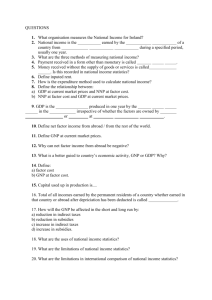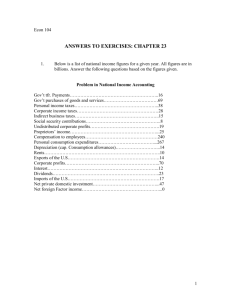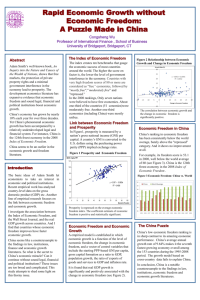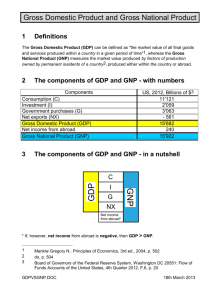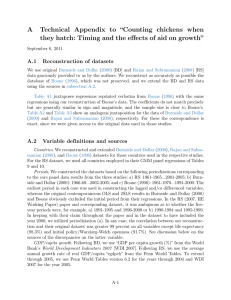8.2 Measures of economic activity – approaches to national income
advertisement
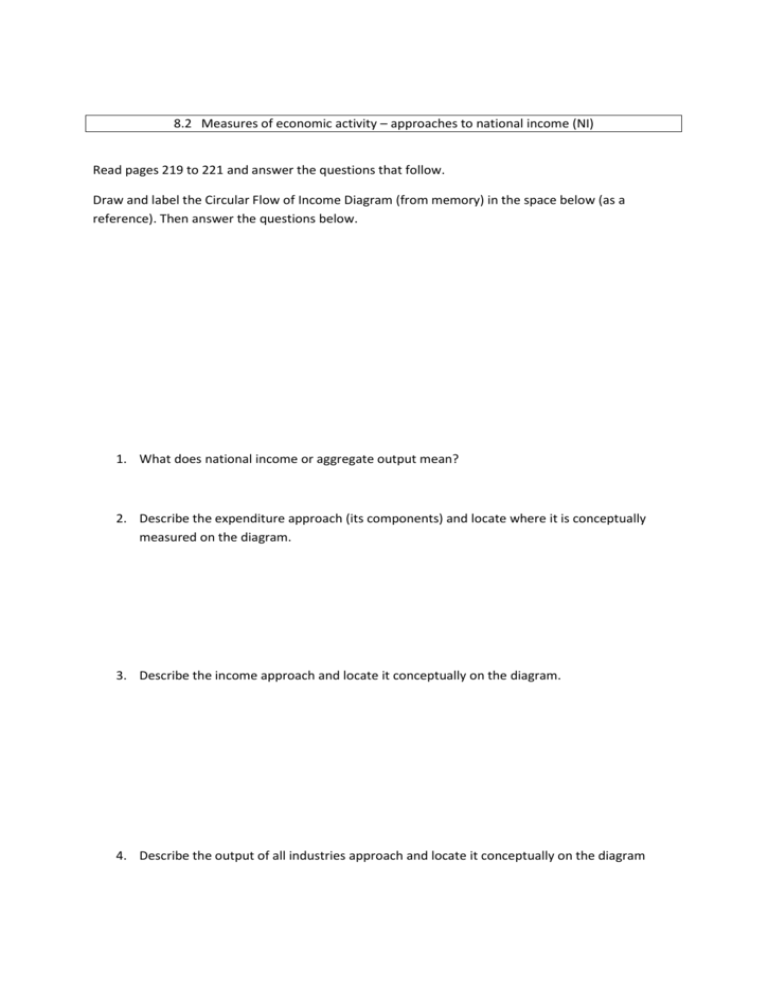
8.2 Measures of economic activity – approaches to national income (NI) Read pages 219 to 221 and answer the questions that follow. Draw and label the Circular Flow of Income Diagram (from memory) in the space below (as a reference). Then answer the questions below. 1. What does national income or aggregate output mean? 2. Describe the expenditure approach (its components) and locate where it is conceptually measured on the diagram. 3. Describe the income approach and locate it conceptually on the diagram. 4. Describe the output of all industries approach and locate it conceptually on the diagram 8.2 Measures of economic activity – distinctions between the measures of NI Read pages 221 to 223 and answer the questions that follow. GNI/GNP is read like “GNI is synonymous with GNP” not GNI divided by GNP – one measure that has two common names. GNI and GNP mean the same, more or less. 1. Give a proper definition for GDP (Gross Domestic Product) 2. Give a proper definition for GNI\GNP 3. Distinguish between GNI/GNP and GDP 4. What does nominal value mean? 5. What does real value mean? 6. Distinguish between nominal GDP and real GDP 7. Define per capita GDP and per capita GNI/GNP 8. Do the TYU on page 223 orally, as a knowledge check. 8.2 Measures of economic activity – evaluating measures of NI Read pages 223 to 226 and answer the questions that follow. Non-marketed output is work that is not sold through a market, e.g. housework, helping a neighbour Underground or parallel markets are not recorded and possibly illegal (avoid a price control, sell drugs) Standard of living refers to the quality of your life; refugees have a low standard of living 1. Identify six reasons why national income measures are not accurate. 2. Identify five reasons why GDP is a lousy measure of standard of living. 3. What is Green GDP? Why might it never ever be used?

